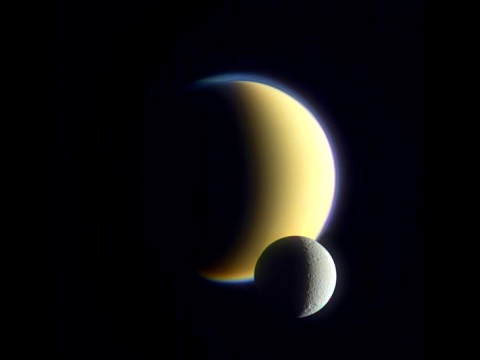How NASA’s Ingenuity Helicopter Was Developed for Mars | WSJ
– This month, NASA’s four pound Ingenuity Helicopter separated from the belly of the Perseverance Rover. A day later, the Rover backed up to allow the helicopters solar array to charge and sent this picture back to earth. – If this flight is successful, I think it is a transformative event for planetary exploration. – This is a model of NASA’s Ingenuity helicopter. In just a few days, a duplicate of this craft will attempt something never done before. Flight on Mars. – (unintelligible) indicates she was deployed. – [Woman] We have confirmation that the Lander vision system has produced a valid solution. – [Narrator] Ingenuity was carried to Mars by NASA’s Perseverance Rover. – [Woman] Touch-down confirmed. – [Narrator] Which landed on on the red planet on February 18th, after a seven month 293 million mile voyage from Earth. Since touching down on the martian surface, Perseverance has been snapping pictures and analyzing nearby rocks. But perhaps the most anticipated part of the Rover’s mission is still to take place. The flight of its martian helicopter. Ingenuity. – So Ingenuity was designed as a tech demo to show that aerial robotics like this are able to be used for planetary exploration. – [Narrator] Ben Pipenberg is a senior Aero Mechanical Engineer at AeroVironment. The contractor hired by NASA to build the aircraft. – Right now we’re in AeroVironment’s clean room facility. I’ve personally spent thousands of man hours in this room. And this is the facility that we built a lot of the flight hardware that’s currently on Ingenuity that’s actually on Mars – [Narrator] For the past seven years, Pipenberg has been working on making Ingenuity a reality. – So that seven year development process, uh, involved a lot of fabrication. So, taking all of the raw components turning that into molded, molded parts. And so, for example, using these kinds of carbon fiber materials, um, and molding that to develop the rotor blades on Ingenuity. Engineering something like this for an environment that we’ve never actually flown in before is very challenging. There have been a lot of other space probes and missions that have gone to Mars. And so we have some understanding of the environment. However nobody’s ever flown on Mars before. – [Narrator] What we do know about the Martian environment suggest that flight as we know it would be difficult. – The Martian atmosphere is much thinner than Earth’s atmosphere. It’s very similar to earth at about a hundred thousand feet actually. – [Narrator] NASA and AeroVironment had the challenge of designing a craft without being able to test in the environment in which it would fly. – [Ben] A lot of the testing that happened on the Mars helicopter happened at JPL’s space simulator facility. It’s a Very large vacuum chamber that can be filled with CO2 gas to simulate the atmosphere on Mars. You know, it’s a really special facility. There are very few like that in the world. – [Narrator] To make Ingenuity a reality, NASA looked to a small defense contractor, AeroVironment. That specializes in unmanned aerial vehicles. – [Ben] So right now we’re in AeroVironment’s nano air vehicle lab and this is a research and development space. And actually a lot of the products that have come out of AeroVironment have started in this lab. So this was one of the first helicopters that we actually built and flew in the space simulator at JPL. Um. This was just a very simple model it was attempting to demonstrate free flight um, in a Martian atmosphere. And it was the first helicopter that actually did that. This is one of the very early rotor blade designs that was tested. The engineering data that was generated from testing this prototype fed directly into the development of the final rotor blade system on, on Ingenuity. – [Narrator] Ben Pipenberg played a major part in designing and building the high speed counter-rotating helicopter blades. – The rotor blades on Ingenuity are designed from a composite materials, so it’s carbon fiber over an engineering foam material. They’re very, very lightweight and they’re very rigid, and that’s required to, uh, control the helicopter and to make the whole thing light enough, to be able to fly – [Narrator] For it’s made in flight. The four pound craft will rise 10 feet above the surface. – So this flight will be less than a minute, likely, um, and it’ll be roughly one story off the ground, uh. So very simple, very benign, low risk, um, low risk to the hardware. And the whole point here is just to demonstrate that this is possible and generate the engineering data that we need to move on to the more capable, more exciting flights. – [Narrator] NASA officials have likened Ingenuity to the Wright brothers’ flyer. Which in 1903 made the first controlled powered flight on earth. A 12 second, 120 foot trip. In homage to that flight, Ingenuity carries with it a swatch of fabric from the flier on the underside of its solar panels. NASA says it plans to conduct up to five additional flights over the next month. These future flights will test the helicopter’s ability to fly higher and longer. Meanwhile, the Perseverance Rover will be nearby. Observing and recording the historic flights.













